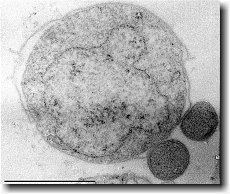 | ||
The Eocyte hypothesis is a biological classification that indicates eukaryotes emerged within the prokaryotic Crenarchaeota (formerly known as eocytes), a phylum within the archaea. This hypothesis was originally proposed by James A. Lake and colleagues in 1984 based on the discovery that the shapes of ribosomes in the Crenarchaeota and eukaryotes are more similar to each other than to either bacteria or the second major kingdom of archaea, the Euryarchaeota.
The eocyte hypothesis gained considerable attention after its introduction due to the interest in determining the origin of the eukaryotic cell. This hypothesis has primarily been in contrast with the three-domain system introduced by Carl Woese in 1977. Additional evidence supporting the eocyte hypothesis was published in the 1980s, but despite fairly unequivocal evidence, support waned in favor of the three-domain system.
With advancements in genomics, the eocyte hypothesis experienced a revival beginning in the mid-2000s. As more archaeal genomes were sequenced, numerous genes coding for eukaryotic traits have been discovered in various archaean phyla, seemingly providing support for the eocyte hypothesis. In addition to a Crenarchaeal origin of eukaryotes, some studies have suggested that eukaryotes may also have originated in the Thaumarchaeota.
